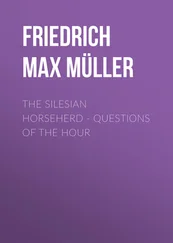Friedrich Max Müller - Chips from a German Workshop, Volume 1
Здесь есть возможность читать онлайн «Friedrich Max Müller - Chips from a German Workshop, Volume 1» — ознакомительный отрывок электронной книги совершенно бесплатно, а после прочтения отрывка купить полную версию. В некоторых случаях можно слушать аудио, скачать через торрент в формате fb2 и присутствует краткое содержание. Жанр: foreign_prose, foreign_antique, на английском языке. Описание произведения, (предисловие) а так же отзывы посетителей доступны на портале библиотеки ЛибКат.
- Название:Chips from a German Workshop, Volume 1
- Автор:
- Жанр:
- Год:неизвестен
- ISBN:нет данных
- Рейтинг книги:3 / 5. Голосов: 1
-
Избранное:Добавить в избранное
- Отзывы:
-
Ваша оценка:
- 60
- 1
- 2
- 3
- 4
- 5
Chips from a German Workshop, Volume 1: краткое содержание, описание и аннотация
Предлагаем к чтению аннотацию, описание, краткое содержание или предисловие (зависит от того, что написал сам автор книги «Chips from a German Workshop, Volume 1»). Если вы не нашли необходимую информацию о книге — напишите в комментариях, мы постараемся отыскать её.
Chips from a German Workshop, Volume 1 — читать онлайн ознакомительный отрывок
Ниже представлен текст книги, разбитый по страницам. Система сохранения места последней прочитанной страницы, позволяет с удобством читать онлайн бесплатно книгу «Chips from a German Workshop, Volume 1», без необходимости каждый раз заново искать на чём Вы остановились. Поставьте закладку, и сможете в любой момент перейти на страницу, на которой закончили чтение.
Интервал:
Закладка:
Whatever the intrinsic value of the Veda, if it simply contained the names of kings, the description of battles, the dates of famines, it would still be, by its age alone, the most venerable of books. Do we ever find much beyond such matters in Egyptian hieroglyphics, or in Cuneiform inscriptions? In fact, what does the ancient history of the world before Cyrus, before 500 b.c., consist of, but meagre lists of Egyptian, Babylonian, Assyrian dynasties? What do the tablets of Karnak, the palaces of Nineveh, and the cylinders of Babylon tell us about the thoughts of men? All is dead and barren, nowhere a sigh, nowhere a jest, nowhere a glimpse of humanity. There has been but one oasis in that vast desert of ancient Asiatic history, the history of the Jews. Another such oasis is the Veda. Here, too, we come to a stratum of ancient thought, of ancient feelings, hopes, joys, and fears,—of ancient religion. There is perhaps too little of kings and battles in the Veda, and scarcely anything of the chronological framework of history. But poets surely are better than kings, hymns and prayers are more worth listening to than the agonies of butchered armies, and guesses at truth more valuable than unmeaning titles of Egyptian or Babylonian despots. It will be difficult to settle whether the Veda is 'the oldest of books,' and whether some of the portions of the Old Testament may not be traced back to the same or even an earlier date than the oldest hymns of the Veda. But, in the Aryan world, the Veda is certainly the oldest book, and its preservation amounts almost to a marvel.
It is nearly twenty years ago that my attention was first drawn to the Veda, while attending, in the years 1846 and 1847, the lectures of Eugène Burnouf at the Collège de France. I was then looking out, like most young men at that time of life, for some great work, and without weighing long the difficulties which had hitherto prevented the publication of the Veda, I determined to devote all my time to the collection of the materials necessary for such an undertaking. I had read the principal works of the later Sanskrit literature, but had found little there that seemed to be more than curious. But to publish the Veda, a work that had never before been published in India or in Europe, that occupied in the history of Sanskrit literature the same position which the Old Testament occupies in the history of the Jews, the New Testament in the history of modern Europe, the Koran in the history of Mohammedanism,—a work which fills a gap in the history of the human mind, and promises to bring us nearer than any other work to the first beginnings of Aryan language and Aryan thought,—this seemed to me an undertaking not altogether unworthy a man's life. What added to the charm of it was that it had once before been undertaken by Frederick Rosen, a young German scholar, who died in England before he had finished the first book, and that after his death no one seemed willing to carry on his work. What I had to do, first of all, was to copy not only the text, but the commentary of the Rig-veda, a work which when finished will fill six of these large volumes. The author or rather the compiler of this commentary, Sâya n a  k ârya, lived about 1400 after Christ, that is to say, about as many centuries after, as the poets of the Veda lived before, the beginning of our era. Yet through the 3000 years which separate the original poetry of the Veda from the latest commentary, there runs an almost continuous stream of tradition, and it is from it, rather than from his own brain, that Sâya n a draws his explanations of the sacred texts. Numerous MSS., more or less complete, more or less inaccurate, of Sâya n a's classical work, existed in the then Royal Library at Paris, in the Library of the East-India House, then in Leadenhall Street, and in the Bodleian Library at Oxford. But to copy and collate these MSS. was by no means all. A number of other works were constantly quoted in Sâya n a's commentary, and these quotations had all to be verified. It was necessary first to copy these works, and to make indexes to all of them, in order to be able to find any passage that might be referred to in the larger commentary. Many of these works have since been published in Germany and France, but they were not to be procured twenty years ago. The work, of course, proceeded but slowly, and many times I doubted whether I should be able to carry it through. Lastly came the difficulty,—and by no means the smallest,—who was to publish a work that would occupy about six thousand pages in quarto, all in Sanskrit, and of which probably not a hundred copies would ever be sold. Well, I came to England in order to collect more materials at the East-India House and at the Bodleian Library, and thanks to the exertions of my generous friend Baron Bunsen, and of the late Professor Wilson, the Board of Directors of the East-India Company decided to defray the expenses of a work which, as they stated in their letter, 'is in a peculiar manner deserving of the patronage of the East-India Company, connected as it is with the early religion, history, and language of the great body of their Indian subjects.' It thus became necessary for me to take up my abode in England, which has since become my second home. The first volume was published in 1849, the second in 1853, the third in 1856, the fourth in 1862. The materials for the remaining volumes are ready, so that, if I can but make leisure, there is little doubt that before long the whole work will be complete.
Now, first, as to the name. Veda means originally knowing or knowledge, and this name is given by the Brahmans not to one work, but to the whole body of their most ancient sacred literature. Veda is the same word which appears in the Greek οἶδα, I know, and in the English wise, wisdom, to wit. 11 10 .
The name of Veda is commonly given to four collections of hymns, which are respectively known by the names of Rig-veda, Ya g ur-veda, Sâma-veda, and Atharva-veda; but for our own purposes, namely for tracing the earliest growth of religious ideas in India, the only important, the only real Veda, is the Rig-veda.
The other so-called Vedas, which deserve the name of Veda no more than the Talmud deserves the name of Bible, contain chiefly extracts from the Rig-veda, together with sacrificial formulas, charms, and incantations, many of them, no doubt, extremely curious, but never likely to interest any one except the Sanskrit scholar by profession.
The Ya g ur-veda and Sâma-veda may be described as prayer-books, arranged according to the order of certain sacrifices, and intended to be used by certain classes of priests.
Four classes of priests were required in India at the most solemn sacrifices:
1. The officiating priests, manual labourers, and acolytes; who have chiefly to prepare the sacrificial ground, to dress the altar, slay the victims, and pour out the libations.
2. The choristers, who chant the sacred hymns.
3. The reciters or readers, who repeat certain hymns.
4. The overseers or bishops, who watch and superintend the proceedings of the other priests, and ought to be familiar with all the Vedas.
The formulas and verses to be muttered by the first class are contained in the Ya g ur-veda-sanhitâ. The hymns to be sung by the second class are in the Sâma-veda-sanhitâ.
The Atharva-veda is said to be intended for the Brahman or overseer, who is to watch the proceedings of the sacrifice, and to remedy any mistake that may occur. 12 12 'History of Ancient Sanskrit Literature,' p. 449.
Fortunately, the hymns to be recited by the third class were not arranged in a sacrificial prayer-book, but were preserved in an old collection of hymns, containing all that had been saved of ancient, sacred, and popular poetry, more like the Psalms than like a ritual; a collection made for its own sake, and not for the sake of any sacrificial performances.
Читать дальшеИнтервал:
Закладка:
Похожие книги на «Chips from a German Workshop, Volume 1»
Представляем Вашему вниманию похожие книги на «Chips from a German Workshop, Volume 1» списком для выбора. Мы отобрали схожую по названию и смыслу литературу в надежде предоставить читателям больше вариантов отыскать новые, интересные, ещё непрочитанные произведения.
Обсуждение, отзывы о книге «Chips from a German Workshop, Volume 1» и просто собственные мнения читателей. Оставьте ваши комментарии, напишите, что Вы думаете о произведении, его смысле или главных героях. Укажите что конкретно понравилось, а что нет, и почему Вы так считаете.












